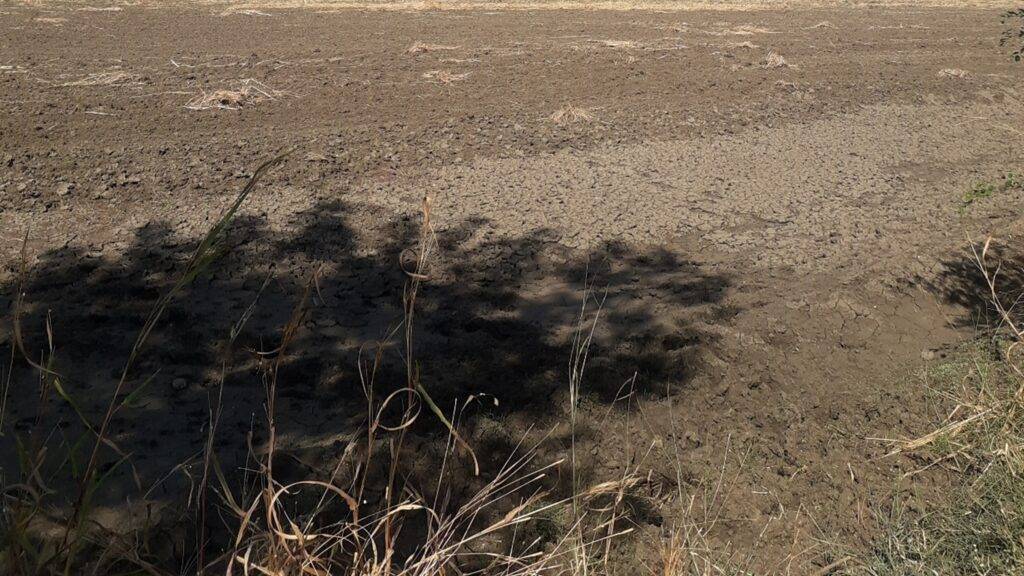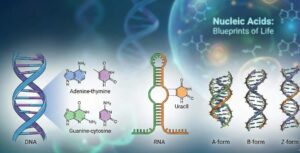
COMPETITIVE EXAM MCQs SERIES of ENVIRONMENTAL SCIENCE for UGC-NET/JRF, SLET, ARS, GATE, and other entrance tests – Environmental Pollution and Control – Analysis of Soil Quality.
Syllabus Outline
- Soil quality assessment (e.g. physical, chemical and biological parameters).
- Soil texture and structure, soil moisture content and pH analysis.
- Soil nutrient analysis (e.g. nitrogen, phosphorus, potassium and micronutrients)
- Soil organic matter content and microbial activity.
- Soil pollution assessment and its impact on soil health.
- Field sampling techniques, data interpretation, and the application of results in agricultural, environmental, and land management.
This quiz contains the concept-based most frequently asked 25 MCQs of “Environmental Pollution and Control – Analysis of Soil Quality“. Each question has a single correct/most appropriate answer.
*****
1. A soil sample with a high cation exchange capacity is likely to be:
a) Sandy
b) Clayey
c) Silty
d) Peaty
2. Nitrate from the soil is often lost if a plant does not uptake since:
a) Nitrate does not react to form new solids
b) Oxide surfaces do not hold nitrate
c) Nitrate binds with iron oxide surface with two chemical bonds
d) Both a and b
3. Which practice is most effective in reducing soil compaction?
a) Plowing the soil frequently
b) Crop rotation with deep-rooted plants
c) Applying excessive amounts of organic matter
d) Using heavy machinery for agricultural operations
4. Which of the following statements is incorrect about soil?
a) Absorption refers to the ability of an object to attract and hold particles on its surface
b) Nutrients in the soil solution can be readily taken up by plant roots
c) If nutrients remained in solution they could all be quickly lost from the soil.
d) Soil solution is a complex solution containing many types of nutrients.
5. Which observation most effectively indicates an enhancement in soil microbial activity?
a) Significant decrease in soil pH
b) Increased electrical conductivity of the soil extract
c) Rapid rise in soil temperature
d) Enhanced soil respiration rate
6. Soil cation exchange capacity decreases as:
a) The amount of clay increases
b) The amount of organic matter increases
c) The soil pH increases
d) The soil surface area decreases
7. Correct arrangement in order of increasing soil particle size
a) Sand, clay, silt
b) Clay, silt, sand
c) Silt, sand, clay
d) Sand, silt, clay
8. Which soil property is not considered an indicator of soil fertility?
a) Soil pH
b) Organic matter content
c) Electrical conductivity
d) Cation exchange capacity
9. Soil texture refers to:
a) Color of the soil
b) Size distribution of soil particles
c) Organic matter content of the soil
d) Soil pH
10. Which of the following soil analysis methods is commonly used to determine the soil’s water-holding capacity?
a) Gravimetric method
b) Titration method
c) Spectrophotometric method
d) Flame photometry
11. The macro-nutrients essential for plant growth include:
a) Nitrogen, phosphorus, and potassium
b) Iron, zinc, and manganese
c) Calcium, magnesium, and sulfur
d) Copper, boron, and molybdenum
12. The cation exchange capacity of soil is influenced by:
a) Soil texture and organic matter content
b) Soil pH and electrical conductivity
c) Soil colour and water-holding capacity
d) Soil salinity and compaction
13. Soil analysis using the Mehlich-3 extraction method is commonly employed to determine the availability of:
a) Nutrients
b) Soil color
c) Soil pH
d) Soil texture
14. Soil analysis for heavy metal contamination typically involves the determination of elements such as:
a) Nitrogen, phosphorus, and potassium
b) Iron, zinc, and manganese
c) Lead, cadmium, and mercury
d) Calcium, magnesium, and sulfur
15. Soil organic matter content is commonly determined using which soil analysis method?
a) Gravimetric method
b) Titration method
c) Spectrophotometric method
d) Combustion method
16. Soil texture classification is based on the relative proportions of:
a) Sand, silt, and clay
b) Organic matter, minerals, and water
c) Macro-nutrients, micro-nutrients, and trace elements
d) Cations and anions
17. Soil analysis for phosphorus content typically involves extraction methods using:
a) Acid solutions
b) Alkaline solutions
c) Organic solvents
d) Water
18. The soil organic matter content contributes to soil fertility by:
a) Providing a source of energy for microorganisms
b) Providing a source of carbon and energy for plants
c) Providing organic carbon as a storage food for plants
d) Balancing soil pH
19. Soil analysis for micronutrients often involves extraction methods using:
a) Acidic solutions
b) Alkaline solutions
c) Organic solvents
d) Distilled water
20. Soil analysis for determining soil texture often utilizes the following:
a) Hydrometer method
b) Titration method
c) Gravimetric method
d) Flame photometry
21. Soil pH affects nutrient availability by influencing the following:
a) Rate of nutrient leaching
b) Solubility of nutrients
c) Organic matter content
d) Cation exchange capacity
22. The soil redox potential is a measure of:
a) Soil acidity
b) Soil compaction
c) Soil oxygen availability
d) Soil organic matter content
23. The soil aggregate stability is a measure of its:
a) Texture
b) Compaction
c) Resistance to erosion
d) Salinity
24. Assertion (A): Soil pH directly affects the availability of certain plant nutrients.
Reason (R): The chemical form of some nutrients changes depending on soil pH.
a) Both A and R are true and R is the correct explanation of A.
b) Both A and R are true but R is NOT a correct explanation of A.
c) A is true but R is false.
d) A is false but R is true.
25. Assertion (A): Clay soils have a lower water-holding capacity than sandy soils.
Reason (R): Sand particles are larger and have more pores to hold water.
a) Both A and R are true and R is the correct explanation of A.
b) Both A and R are false.
c) A is true but R is false.
d) A is false but R is true.
*****
Previous: Drinking Water Treatment
Next: Soil Microorganisms and their Functions
References
- Brady, Nyle C., and Weil, Ray R. (2016) The Nature and Properties of Soils, Pearson, 15th edition.
- Sharma, S. K. (2019) Soil Pollution and Its Management, Khanna Publishers, 1st edition.
- Das, H. C. (2009) Soil Science: Principles and Practices, New India Publishing, 2nd edition.

